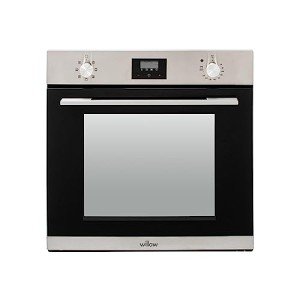How To Outsmart Your Boss On Oven Built In

The Rise of Built-In Ovens: A Seamless Approach to Modern Cooking
In modern kitchens, where design looks mix effortlessly with functionality, one device stands out as a true game changer: the built-in oven. As house owners and chefs alike continue to look for innovative services that boost their cooking experience, built-in ovens have actually ended up being increasingly popular. This article checks out the advantages, factors to consider, and trends surrounding built-in ovens, highlighting why they are a vital function in contemporary cooking spaces.
What is a Built-In Oven?
A built-in oven is a kitchen device designed to be integrated into the cabinetry of a kitchen area instead of standing alone. Unlike standard freestanding ovens, which can be moved and positioned anywhere, built-in ovens come in various designs and sizes to fit specifically within designated areas. Readily available in single or double setups, these ovens provide a streamlined appearance that matches modern-day kitchen designs.

Benefits of Built-In Ovens
1. Space-Saving Design
Among the most attractive benefits of built-in ovens is their space-saving design. By integrating the oven into kitchen cabinetry, you can release up valuable counter and flooring space. This is particularly useful in smaller sized kitchen areas, where taking full advantage of space is important. Built-in ovens can be set up at eye level, making them more available and decreasing the need to bend down.
2. Visual Appeal
Built-in ovens add to a sleek and cohesive kitchen style. Available in different surfaces-- such as stainless-steel, black, white, and custom-made cabinets-- they can mix seamlessly into the total decor. This aesthetic appeal enhances the cooking area's visual harmony and raises the space, developing a modern-day and advanced environment.
3. Enhanced Functionality
Lots of built-in ovens come geared up with sophisticated cooking technologies, such as convection cooking, steam ovens, and clever features. These improvements permit flexible cooking alternatives, making it easier to achieve professional-level results in your home. Smart built-in ovens can even connect to Wi-Fi, enabling users to control the oven from another location, get alerts, and access a variety of cooking programs and recipes.
4. Enhanced Ventilation
Due to the fact that built-in ovens can be integrated with kitchen area hoods and ventilation systems, they can assist preserve much better air quality and decrease cooking odors. This is particularly considerable for those who love to prepare with fragrant spices and ingredients, as an efficient ventilation system can keep the cooking area comfy and welcoming.
5. Modification Options
Built-in ovens offer a wide variety of personalization alternatives to fit specific cooking designs and requirements. From professional-grade home appliances with numerous cooking modes to compact styles for smaller cooking areas, homeowners can choose the oven that fits their particular requirements. Numerous manufacturers likewise use customizable front panels, allowing you to match the oven's look to your cabinetry for a genuinely unified appearance.
Factors to consider When Choosing a Built-In Oven
While built-in ovens have lots of advantages, there are essential considerations to keep in mind before making a purchase:
1. Rate
Built-in ovens normally come with a higher price than their freestanding equivalents due to their style and installation requirements. build in oven to aspect in both the cost of the oven and any additional expenses related to cabinets modifications or setup.
2. Setup Requirements
Setting up a built-in oven often requires expert support, especially if you require to modify existing kitchen cabinetry. Guarantee that you consider any expenses related to installation, consisting of labor and possible cabinets modifications.
3. Size and Dimensions
Before acquiring a built-in oven, measure the designated space properly to ensure a proper fit. Built-in ovens been available in numerous sizes and setups, so selecting one that aligns with your requirements and kitchen design is crucial.
4. Lifestyle and Usage
Consider your cooking practices and requires when picking a built-in oven. If you frequently host large events, a double oven might be more beneficial. On the other hand, if you have a compact cooking area, a single-wall oven may suffice.
Trends in Built-In Ovens
The cooking area device market is constantly evolving, and built-in ovens are not exempt from emerging patterns. Some current patterns consist of:
Smart Technology Integration: With the increase of smart home technology, built-in ovens now often include connectivity alternatives. This allows users to keep track of cooking progress and adjust settings through mobile apps.
Energy Efficiency: As sustainability ends up being a top priority, many makers are buying energy-efficient built-in ovens that minimize energy consumption while maintaining efficiency.
Multi-functional Designs: Built-in ovens now provide functions such as air frying, slow cooking, and steaming, providing flexibility that fulfills a wide variety of cooking approaches.
Conclusion
Built-in ovens unquestionably represent an ideal blend of style, function, and convenience in today's cooking areas. As more house owners choose this modern-day solution, the focus shifts to producing a cooking space that is as aesthetically pleasing as it is useful. Whether you are developing a new home or remodeling your kitchen area, considering a built-in oven could elevate your culinary experience and change your cooking area into a trendy and functional sanctuary. With a selection of choices readily available and ongoing innovations in technology, built-in ovens remain a standout option for both amateur cooks and culinary lovers alike.
